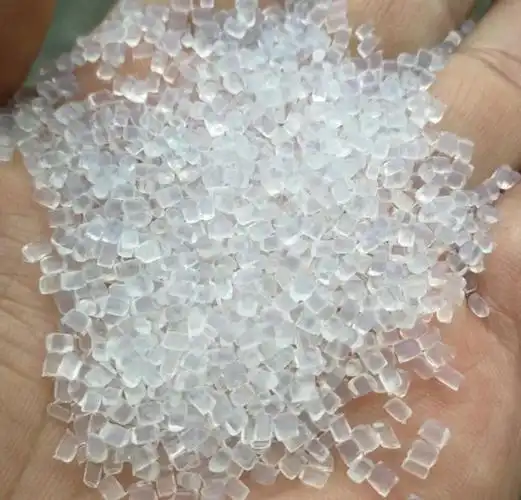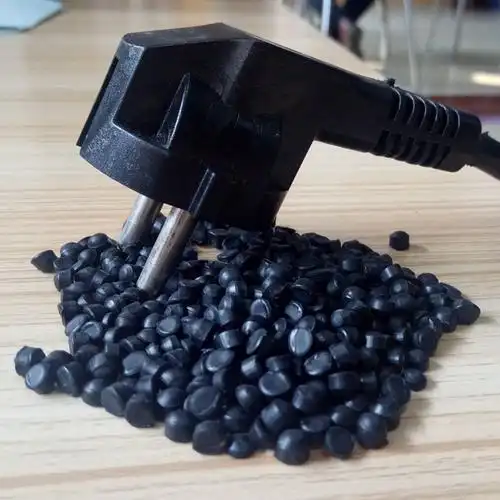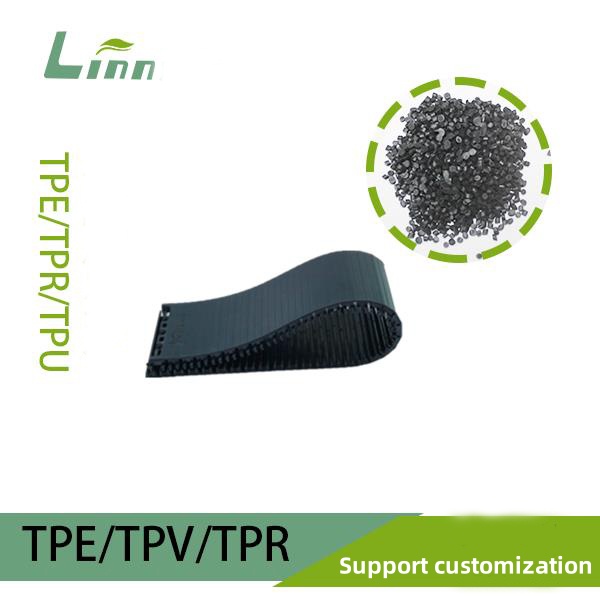Having spent over a decade in the materials industry, working on everything from consumer electronics to medical devices, I’ve come across countless questions about Thermoplastic Elastomer (TPE) and silicone. One that keeps popping up, especially among those diving into material selection or curious about their everyday products, is whether TPE is a component of silicone. It’s a reasonable question, given how similar these materials can feel—both soft, flexible, and rubbery. But as someone who’s navigated material specs and manufacturing processes for years, I can tell you the answer isn’t as straightforward as it seems. Let’s unpack the relationship between TPE and silicone, clear up the confusion, and explore their roles in various applications, all based on my hands-on experience.

Why the Confusion?
The mix-up between TPE and silicone is understandable. Both materials are used in products like phone cases, kitchen tools, and medical tubing, and they share that soft, stretchy vibe. If you’re holding a flexible item, like a yoga mat or a baby bottle nipple, you might wonder if TPE is somehow part of silicone’s makeup. Maybe you’re a designer choosing materials or a consumer trying to understand what’s in your product. Either way, knowing whether TPE is a component of silicone helps you make informed decisions about durability, safety, and performance. So, let’s dive into the science and practical differences to set the record straight.
What Are TPE and Silicone?
Before we address the main question, let’s get clear on what these materials are. As someone who’s worked with both in production lines and design meetings, I’ve learned to appreciate their unique properties.
Thermoplastic Elastomer (TPE)
TPE is a family of materials that blend the flexibility of rubber with the processability of plastic. It’s thermoplastic, meaning it can be melted and reshaped multiple times, which makes it ideal for manufacturing processes like injection molding or extrusion. TPE comes in various formulations, like styrene-based (SEBS) or polyurethane-based (TPU), and is used in everything from shoe soles to cable insulation. Its versatility and cost-effectiveness make it a go-to for many industries.
Silicone
Silicone, on the other hand, is a thermoset material, meaning once it’s cured, it can’t be melted and reshaped. Chemically, silicone is based on silicon-oxygen polymer chains with organic groups attached, giving it excellent heat resistance, flexibility, and durability. You’ll find silicone in bakeware, medical implants, and seals, thanks to its stability and biocompatibility.
Is TPE a Component of Silicone?
Here’s the short answer: No, TPE is not a component of silicone. TPE and silicone are distinct materials with different chemical compositions and manufacturing processes. However, the confusion often stems from their similar properties and overlapping applications. Let me break it down based on my experience working with both materials.

Chemical Composition
TPE: TPE is a blend of polymers, typically including a plastic component (like polypropylene) and an elastomeric component (like styrene-butadiene). It’s entirely organic, based on carbon-hydrogen chains, and contains no silicon-oxygen bonds. The exact recipe depends on the TPE type, but it’s always a thermoplastic material.
Silicone: Silicone is built around a silicon-oxygen backbone (siloxane), with methyl or other organic groups attached. This unique structure gives silicone its heat and chemical resistance, but it’s not a thermoplastic. Crucially, silicone doesn’t incorporate TPE or its components in its formulation.
In my work, I’ve reviewed material data sheets for both TPE and silicone, and there’s no overlap in their base chemistry. TPE is purely a polymer blend, while silicone’s silicon-based structure sets it apart.
Manufacturing Differences
The way these materials are processed further confirms they’re separate entities. TPE is typically injection-molded or extruded because it melts under heat. I’ve overseen TPE production for phone cases, where we’d heat the material to a molten state and inject it into molds. Silicone, however, is usually cast or compression-molded and requires curing (often with heat or chemicals) to set its shape permanently. During a project for silicone bakeware, I saw how the curing process made it impossible to remelt the material—unlike TPE.
Blends and Hybrids
Here’s where things get a bit tricky. In some cases, manufacturers create hybrid materials that combine properties of TPE and silicone-like materials, but these are not true silicones. For example, some TPE formulations are designed to mimic silicone’s smooth feel or heat resistance. I’ve encountered TPE blends marketed as “silicone-like” for cost savings, but they’re still TPE at their core, with no silicone components. Conversely, silicone can’t incorporate TPE because its thermoset nature doesn’t allow blending with thermoplastics.
Why TPE and Silicone Get Confused
From my time in the industry, I’ve seen a few reasons why people think TPE might be part of silicone:
Similar Applications: Both are used in soft, flexible products like grips, seals, and medical devices, leading to assumptions they’re related.
Marketing Missteps: Some manufacturers label TPE products as “silicone” to capitalize on silicone’s reputation for safety and durability. I’ve caught suppliers doing this with cheap TPE phone cases, which caused confusion during quality checks.
Physical Similarity: Both materials can feel soft, stretchy, and slightly tacky, making it hard to tell them apart without testing.

How to Distinguish TPE from Silicone
If you’re holding a product and wondering whether it’s TPE or silicone, here are practical methods I’ve used to tell them apart:
1. Feel and Texture
TPE often has a slightly tacky, grippy feel, while silicone is smoother and less sticky. For example, I’ve noticed TPE yoga mats have a grippier texture compared to silicone baking mats, which feel almost slippery. Try running your fingers over the surface—TPE tends to “grab” a bit more.
2. Heat Response
TPE is thermoplastic, so it softens under moderate heat (like from a hairdryer). Silicone, being thermoset, stays firm even at high temperatures. I’ve used this trick in labs to identify materials—heat a small, non-critical area (safely!) and see if it becomes pliable. TPE will; silicone won’t.
3. Smell Test
TPE has a mild, plastic-like smell, especially when new, while silicone is typically odorless or has a faint, neutral scent. During a project with TPE cable insulation, I could detect a subtle plastic odor, unlike the silicone seals we used elsewhere, which had no smell.
4. Chemical Resistance
Silicone is highly resistant to oils, solvents, and extreme temperatures, while TPE is more vulnerable. If you have a sample, dab a tiny bit of oil on an inconspicuous area. TPE might swell or become sticky after a few hours; silicone usually stays unaffected. I’ve used this test when auditing materials for automotive parts.
5. Burn Test (Lab Only)
In controlled lab settings, a burn test can differentiate them. TPE burns with a plastic-like smell and melts, while silicone burns with a white ash and minimal odor. I’ve done this in material verification labs, but it’s not safe for casual use—leave it to professionals with proper equipment.
6. Check Documentation
For professionals, the easiest way is to request a material data sheet (MDS) from the supplier. It will list whether the material is TPE or silicone, along with specs like Shore hardness or chemical composition. I always insist on MDS for critical applications like medical devices.

Comparing TPE and Silicone
To make it easier to understand their differences, here’s a table based on my experience with both materials across various projects.
|
Material |
Chemical Base |
Processing |
Key Properties |
Common Uses |
|---|---|---|---|---|
|
TPE |
Carbon-based polymers |
Injection molding, extrusion |
Flexible, recyclable, cost-effective |
Phone cases, grips, tubing |
|
Silicone |
Silicon-oxygen backbone |
Casting, compression molding |
Heat-resistant, biocompatible, durable |
Bakeware, medical implants, seals |
This table highlights why TPE isn’t a component of silicone—their chemistries and processing methods are fundamentally different. Silicone’s silicon-based structure can’t incorporate TPE’s carbon-based polymers.
Real-World Examples from My Experience
Let me share a couple of stories to illustrate the TPE-silicone confusion. A few years ago, I worked with a client designing TPE grips for fitness equipment. They initially thought the grips were silicone because of their soft feel, but the supplier’s MDS confirmed TPE (SEBS-based). A quick heat test showed the grips softened slightly, ruling out silicone. This taught me how often marketing blurs the lines between the two materials.
On another project, we sourced silicone tubing for a medical device. A competitor offered a cheaper “silicone” alternative, but its tacky feel and slight plastic smell raised red flags. Testing revealed it was TPE, not silicone, which wouldn’t have met the device’s biocompatibility requirements. These experiences underscore the importance of verifying materials, especially in high-stakes applications.
Practical Applications: When to Choose TPE or Silicone
Understanding that TPE isn’t part of silicone also helps in choosing the right material. Here’s what I’ve learned about their best uses:
TPE: Ideal for cost-sensitive, high-volume products like phone cases or shoe soles. Its recyclability and ease of processing make it great for consumer goods. However, it’s less resistant to heat and chemicals, so avoid it for extreme conditions.
Silicone: Perfect for high-temperature or medical applications, like oven mitts or surgical implants. It’s pricier but excels in durability and safety. I’ve recommended silicone for food-contact products because of its FDA approval and stability.

Challenges in Distinguishing TPE and Silicone
Identifying whether a product is TPE or silicone can be tricky, especially with blends or poorly labeled items. Some TPEs are engineered to feel like silicone, and low-quality silicones might mimic TPE’s tackiness. In one project, I dealt with a TPE/PVC blend that felt oddly like silicone until we ran an FTIR analysis to confirm its composition. For consumers, relying on sensory checks and brand reputation is often the best bet; for professionals, lab tests or supplier documentation are key.
Tips for Consumers and Manufacturers
For Consumers
If you’re trying to figure out if your product is TPE or silicone:
Check the Feel: TPE is grippier; silicone is smoother. Compare a TPE phone case to a silicone baking mat to feel the difference.
Look at Product Specs: Reputable brands often list materials on packaging or websites, especially for safety-critical items like baby products.
Test Durability: If it’s a high-heat environment (like a kitchen), silicone is more likely; TPE might deform or degrade.
For Manufacturers
If you’re selecting materials:
Verify with Suppliers: Always request an MDS to confirm whether it’s TPE or silicone. I’ve caught suppliers swapping materials to cut costs.
Match Material to Application: Use TPE for cost-effective, flexible parts; choose silicone for heat or chemical resistance.
Educate Your Team: Train quality control staff to spot the differences through texture, smell, or simple tests.
The Future of TPE and Silicone
The materials industry is always evolving. New TPE formulations are getting closer to silicone’s performance, with improved heat and chemical resistance. Meanwhile, silicone is becoming more sustainable with bio-based options. In my work, I’ve seen growing interest in clear labeling to avoid confusion, especially for consumer goods. As testing technology—like portable spectrometers—becomes more accessible, identifying TPE versus silicone will get easier, even for non-experts.

Final Thoughts
To sum it up, TPE is not a component of silicone—they’re distinct materials with different chemistries, processing methods, and applications. From my years in the field, I’ve learned that understanding these differences is crucial, whether you’re picking a material for a product or just curious about what’s in your kitchen drawer. By using sensory checks, looking for manufacturing clues, or consulting documentation, you can confidently tell TPE and silicone apart.
Next time you’re handling a soft, flexible product, take a moment to apply these tips. You’ll likely figure out whether it’s TPE, silicone, or something else entirely, and that knowledge can guide better decisions about use and care.
Related Questions and Answers
Q: Can TPE and silicone be used together in one product?
A: Yes, but not as a blend. TPE and silicone can be combined in multi-material products, like a TPE grip overmolded onto a silicone base, but they remain separate layers due to their incompatible chemistries.
Q: Is TPE safer than silicone for food contact?
A: Silicone is generally preferred for food-contact applications because of its superior heat resistance and FDA approvals. Some TPE grades are food-safe, but always check certifications.
Q: Why is silicone more expensive than TPE?
A: Silicone’s higher cost comes from its complex manufacturing (curing processes) and raw material expenses. TPE is cheaper because it’s easier to process and recycle.
Q: Can I replace silicone with TPE in my product?
A: It depends on the application. TPE is a cost-effective alternative for non-critical uses, but for high-heat or medical applications, silicone’s superior stability makes it irreplaceable.





